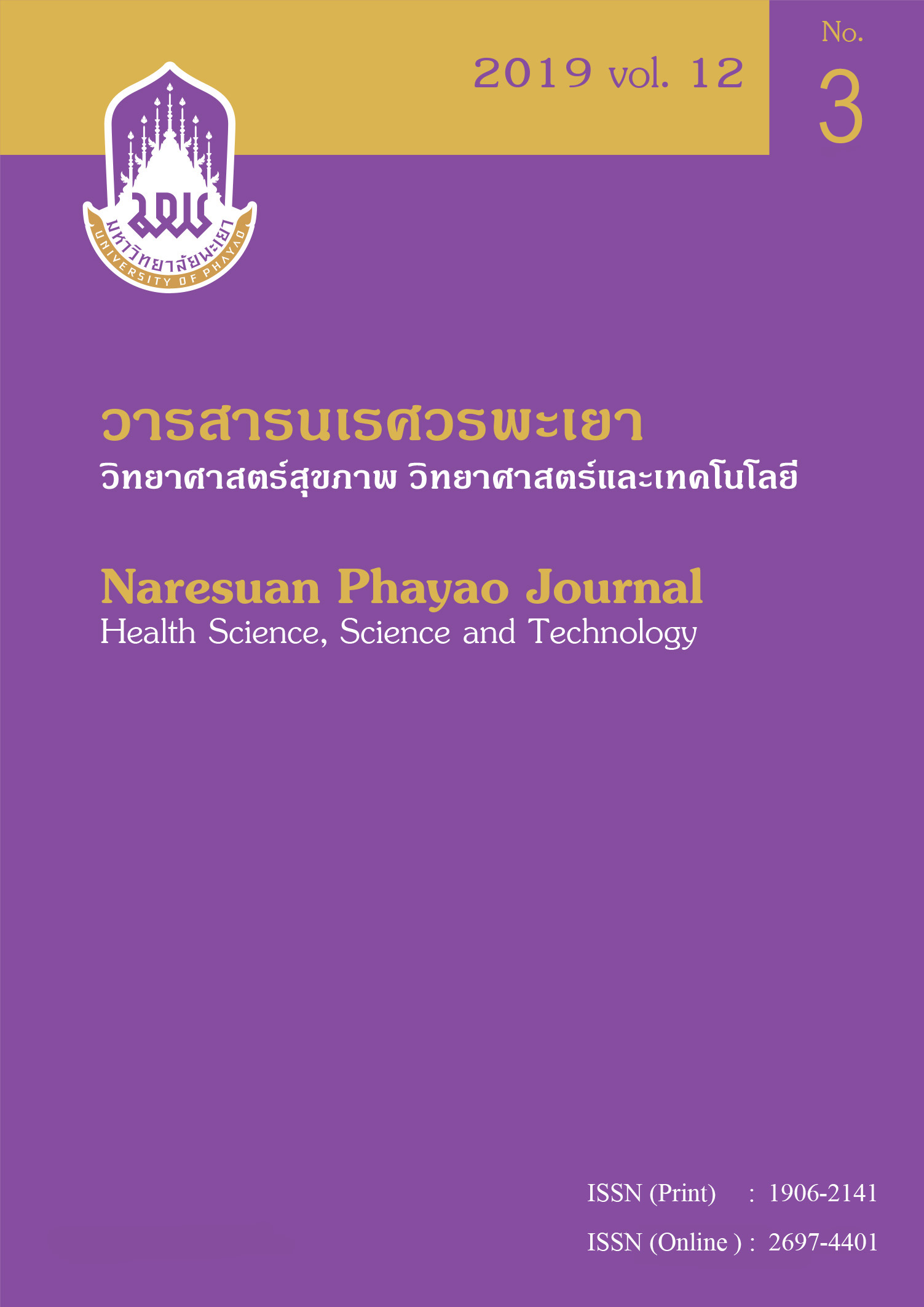สภาวะที่เหมาะสมสำหรับการงอกของสปอร์และความไวต่อสภาวะเครียดของ Talaromyces marneffei
Keywords:
Opportunistic fungi, spore germination, stress responseAbstract
The purpose of the study was to investigate the conditions for spore germination under environmental stress to determine susceptibility of T. marneffei to conditions that initiate dimorphism. The results revealed that percentage of spore germination at 25oC is higher than germination at 37oC, and constants at 16 hours after inoculation as compared to 20 hours, respectively. Additionally, sublethal dose concentration testing demonstrated that both mycelium and yeast phase was susceptible to the sublethal dose of CaCl2 (200 mM), NaCl (0.5M), Sorbitol (0.75M), Menadione (62.5 µM), H2O2 (2.5 mM), and SDS (0.005 %). Meanwhile, the sublethal dose of t-butyl hydroperoxide in mold and yeast phases were 1.5 and 0.5mM, respectively. This result could be further applied for fungal stress susceptibility testing comparing of wild type and mutants.
Downloads
Published
How to Cite
Issue
Section
License
ผู้นิพนธ์ต้องรับผิดชอบข้อความในบทนิพนธ์ของตน มหาวิทยาลัยพะเยาไม่จำเป็นต้องเห็นด้วยกับบทความที่ตีพิมพ์เสมอไป ผู้สนใจสามารถคัดลอก และนำไปใช้ได้ แต่จะต้องขออนุมัติเจ้าของ และได้รับการอนุมัติเป็นลายลักษณ์อักษรก่อน พร้อมกับมีการอ้างอิงและกล่าวคำขอบคุณให้ถูกต้องด้วย
The authors are themselves responsible for their contents. Signed articles may not always reflect the opinion of University of Phayao. The articles can be reproduced and reprinted, provided that permission is given by the authors and acknowledgement must be given.







